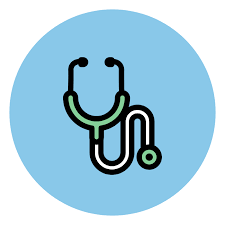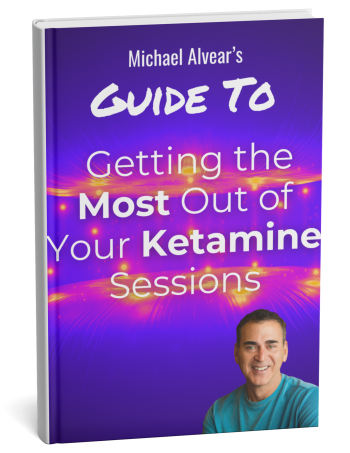How Effective Is Ketamine Therapy on Depression?
By Michael Alvear, Health Author & Independent Researcher
My research is published on these scholarly platforms:
Last Updated:
This page summarizes every systematic review and meta-analysis on ketamine therapy for depression published in the last 5 years (2020–2024).
What You’ll Discover
- Response rates: How many patients experience significant symptom improvement
- Remission rates: How many patients achieve full recovery from depression
- Comparative effectiveness: How IV ketamine, oral ketamine, and esketamine (Spravato) stack up against each other
Evidence-Based & Current
All information comes from peer-reviewed systematic reviews and meta-analyses published between 2020 and 2024, representing the most rigorous and up-to-date research available on ketamine’s effectiveness for depression.
Ready to explore the data? We’ve organized everything into 7 comprehensive sections.
↓
Click any card to jump directly to that section
Can’t Decide Between IV, Injections, Or Spravato?
Use My Decision Table
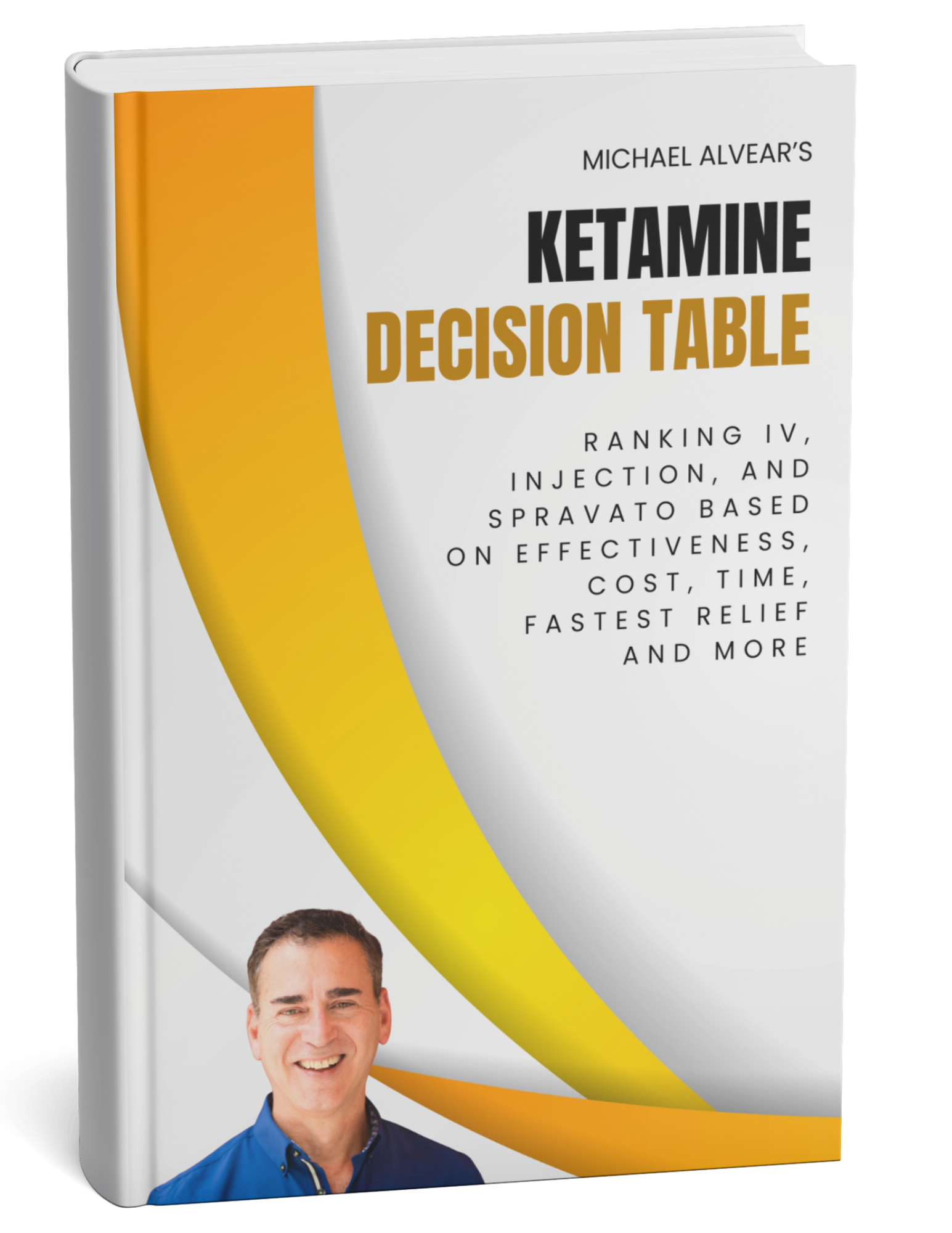
This report ranks all three options—IV, injection, and Spravato—on effectiveness, cost, fastest relief, and more, giving you a clear framework to decide.
Downloads as PDF • 5 minute read
Systematic Reviews & Meta-Analyses Used in This Research Summary
▼
| Journal | Study Type | Title | Key Findings |
|---|---|---|---|
| Journal of Affective Disorders, 2020 | Meta-Analysis | The effect of intravenous, intranasal, and oral ketamine in mood disorders: A meta-analysis | While both intravenous and intranasal formulations show robust short-term efficacy in reducing depression symptoms in TRD, oral ketamine shows a moderate effect over a longer time frame. |
| Journal of Affective Disorders, 2021 | Systematic Review & Meta-Analysis | Comparative Efficacy of Racemic Ketamine and Esketamine for Depression | Response rate for ketamine was 3x higher than for esketamine (RR = 3.01 vs. RR = 1.38). Remission rate for ketamine was 2.52x higher than for esketamine. Patients were 1.8x more likely to drop out with esketamine. |
| Journal of Clinical Psychiatry, 2019 | Systematic Review | Oral Ketamine for Depression: A Systematic Review | Oral ketamine shows delayed but statistically significant improvements. Unlike IV ketamine, effects take 2–6 weeks. Effective but less rapid than other forms. |
| Psychopharmacology Bulletin, 2020 | Systematic Review | Oral Ketamine for Major Depression: Updated Review | Moderate antidepressant effects with favorable safety profile. Statistically significant symptom reductions appeared by week 2. Remission and response rates were 2.6–2.8× higher than placebo, but marginally significant. |
| World Journal of Biological Psychiatry, 2023 | Systematic Review | Oral Ketamine for Depression: An Updated Review | All studies showed improvement in symptoms. Trials had high risk of bias. Promising early results, but more robust studies needed for treatment-resistant depression. |
| Journal of Psychopharmacology, 2021 | Systematic Review | Ketamine-Assisted Psychotherapy for Depression | Ketamine enhances neuroplasticity and emotional accessibility. Psychotherapy may help sustain ketamine’s antidepressant effects. No large-scale RCTs comparing KAP to ketamine alone. |
| Journal of Pain Research, 2022 | Systematic Narrative Review | Ketamine Assisted Psychotherapy: A Systematic Narrative Review of the Literature | Ketamine alone provides short-term relief. Adding psychotherapy (e.g. CBT) helps sustain benefits. Suggests ketamine opens the door, therapy keeps it open. |
| British Journal of Psychiatry, 2023 | Systematic Review | Ketamine and Psychotherapy for the Treatment of Psychiatric Disorders | Ketamine + CBT showed promising results (50% response, 43.8% remission). But no direct comparison with ketamine-only. Studies varied in protocols and methods. |
| American Journal of Psychiatry, 2024 | Systematic Review and Meta-Analysis | Esketamine Treatment for Depression in Adults | Esketamine offers only small improvements. Effect size 0.15–0.23—about the same as adding antipsychotics. No effect on suicidal ideation. |
| Pharmacy and Therapeutics, 2019 | Narrative Review | Intranasal Esketamine (Spravato™) for Treatment-Resistant Depression | 65% had ≥50% symptom reduction. 16.7% vs 2.9% remission compared to placebo. Faster onset than SSRIs but lower long-term remission rates. |
| Johnson & Johnson, 2018 | Clinical Trial | Esketamine Nasal Spray Phase 3 Study Results | 54.1% response and 38.8% remission at Day 28. 5× higher remission than placebo. |
| Frontiers in Psychiatry, 2023 | Indirect Adjusted Comparison (ITC) | Esketamine vs Real-World Polypharmacy: ICEBERG Study | Esketamine had higher 6-month response (49.7%) and remission (33.6%) than polypharmacy. Statistically significant even after adjusting for confounders. |
| Neuropsychopharmacology, 2023 | Long-Term Extension Study | Esketamine Nasal Spray: SUSTAIN-3 Study | Response rate: 50.6% at Day 28, sustained at 1 year. Remission rate rose from 35.6% to 46.1% over long-term maintenance. |
| Cureus, 2021 | Systematic Review | Efficacy and Safety of Intranasal Esketamine in TRD Adults | 47.2% remission after 4 weeks. 76.5% response and 58.2% remission after 1 year. Older adults had slightly higher remission than younger adults. |
| Psychiatry Research, 2024 | Systematic Review and Meta-Analysis | Ketamine vs ECT for Major Depression | ECT outperformed ketamine short-term, but both similar for long-term remission. Ketamine had better cognition outcomes and fewer side effects. |
| Psychopharmacology Bulletin, 2020 | Systematic Review | An Update on the Efficacy and Tolerability of Oral Ketamine for Major Depression | Oral ketamine shows moderate antidepressant effects with a favorable safety profile. Benefits appeared by week 2, but full remission or response was only marginally significant. |
| World Journal of Biological Psychiatry, 2023 | Systematic Review | Oral Ketamine for Depression: An Updated Systematic Review | All studies reported symptom improvement. Trials had high risk of bias. Larger studies needed to confirm antidepressant and antisuicidal effects in TRD. |
| Journal of Affective Disorders, 2020 | Meta-Analysis | The Effect of IV, Intranasal, and Oral Ketamine in Mood Disorders | Intranasal and IV ketamine showed large short-term effects; oral had moderate, slower-acting results. Symptom relief varied by route and timing. |
| Acta Psychiatrica Scandinavica, 2021 | Meta-Analysis | The Effects of Psychotherapy for Depression: A Meta-Analysis | Psychotherapy showed 2.5–3× better outcomes than control. Response rate: 41%; Remission: 26–34%. CBT, IPT, and other types performed similarly. |
| American Journal of Psychiatry, 2024 | Systematic Review and Meta-Analysis | Esketamine for Depression in Adults | Esketamine’s antidepressant effect was small (effect size 0.15–0.23). No impact on suicidal ideation. Comparable to antipsychotic augmentation. |
| Pharmacy and Therapeutics, 2019 | Narrative Review | Esketamine (Spravato) for TRD: Overview | 54–65% responded. Remission was 16.7–32%. Faster than SSRIs but lower total remission rate. Works best when combined with oral antidepressants. |
| Frontiers in Psychiatry, 2023 | Indirect Comparison | Esketamine vs Polypharmacy: ICEBERG Study | Esketamine showed better 6-month response (49.7%) and remission (33.6%) vs multiple-med strategy. Adjusted for confounders. |
| Neuropsychopharmacology, 2023 | Long-Term Extension Study | SUSTAIN-3: Esketamine Maintenance | 50.6% response at Day 28. 46.1% still in remission at one year. Suggests esketamine can be sustained with long-term use. |
| Cureus, 2021 | Systematic Review | Intranasal Esketamine in Adults with TRD | 1-year outcomes: 76.5% response, 58.2% remission. Older adults had slightly higher remission than younger patients. |
| Psychiatry Research, 2024 | Systematic Review and Meta-Analysis | Ketamine vs ECT for Major Depression | ECT had stronger initial results. Both performed equally well long-term. Ketamine had better cognitive outcomes and fewer side effects. |
| JAMA Network Open, 2024 | Secondary Analysis | Ketamine vs ECT: RCT Reanalysis | Ketamine outperformed ECT in outpatients. ECT better for inpatients. Remission: 42.9% for ketamine vs 10.6% for ECT in patients on antipsychotics. |
| JAMA Psychiatry, 2023 | Meta-Analysis | Ketamine vs ECT: Systematic Review | ECT had 27% higher response and 43% higher remission vs ketamine. SMD: -0.45. Cognitive side effects were similar between groups. |
| JAMA Psychiatry, 2022 | Meta-Analysis | Efficacy of Ketamine vs ECT | ECT was 9.5% more effective at reducing symptoms. SMD = -0.69. Ketamine still produced substantial improvement but slightly less than ECT. |
| Acta Psychiatrica Scandinavica, 2019 | Meta-Analysis | ECT in Bipolar vs Unipolar Depression | Response rates were 74–77%; remission ~52% in both groups. ECT is highly effective for both MDD and bipolar depression. |
How Effective Are IV and Injection Ketamine for Treating Depression?
Key Findings at a Glance
Rapid Relief: IV ketamine produces significant antidepressant effects within 24 hours of a single infusion.
Response Rates: Between 30% and 76% of patients experience at least a 50% reduction in depression symptoms, with a median response rate of 55%.
Remission Rates: 27% to 43% of patients achieve few or no symptoms (remission), with a median rate of 29%.
Quick Action Against Suicidal Thoughts: Some studies report significant reductions in suicidal ideation within just 40 minutes.
Duration of Effects: Antidepressant effects were sustained for up to 7 days after a single infusion, with longer effects possible after multiple treatments.
See the full findings. View the PDF in your browser or download it for later.
Systematic Review Evidence for IV Ketamine Treatment
Effectiveness After a Single Treatment
Intravenous (IV) ketamine consistently demonstrates rapid and significant reductions in depression symptoms, even in major treatment-resistant cases. Meta-analyses show that a single infusion can deliver relief within hours, with response rates ranging from 50% to 70% and remission rates between 20% and 40% after just one or two infusions.
Multiple Treatment Benefits
Several reviews highlight improved outcomes with multiple infusions, especially when spaced over two to four weeks. Serial infusions led to remission rates of up to 40%, though most reviews did not specify exactly how many infusions these protocols included. Based on the source studies referenced, the vast majority involved just one or two infusions.
Detailed IV Ketamine Results
- IV ketamine consistently produced rapid antidepressant effects, often within 24 hours of a single infusion
- Response rates in clinical trials ranged from 45% to 65%, compared to placebo rates between 5% and 20%
- Remission occurred in up to 30% of patients after just one infusion—a striking result given the brevity of the treatment
- Some studies reported significant reductions in suicidal ideation within 40 minutes, though these effects were not universally found to be statistically significant
- Antidepressant effects were sustained in many patients for up to 7 days, and in some cases longer—especially with repeated infusions
Real-World vs. Clinical Trial Results
Real-world response rates (~30%) tend to be lower than those in controlled clinical trials (~63%)—a pattern commonly observed in psychiatric research. These outcomes were observed across five large-scale systematic reviews and meta-analyses published between 2014 and 2024.
Understanding the Limitations of Current Research
The Gap in Long-Term Data
Important Context: Most systematic reviews and meta-analyses on IV ketamine measure response and remission rates after just one or two infusions, typically within a few days. This tells us ketamine works fast but reveals little about what matters most to patients—the chances that a full protocol can end or nearly end their depression.
Why Individual Studies Can Be Misleading
Long-term data on IV or injection ketamine therapy is limited to non-existent in the published literature, with studies typically capping at six infusions. While some individual studies report impressive results, they shouldn’t be overinterpreted:
- An open-label study found a 79% remission rate after a 9-month follow-up, but lacks the controlled rigor of a randomized trial
- Another study showed 69% of patients with suicidal ideation achieving full remission after six infusions over four weeks—but doesn’t report depression remission rates
- A 12-month follow-up study based on six infusions reported a 46% remission rate
These individual studies were not included in the analysis because they lack the broader synthesis and methodological rigor that systematic reviews provide in assessing long-term efficacy and safety.
Treatment Method Comparisons
While IV ketamine has the strongest evidence base overall, intramuscular injection has shown comparable outcomes in smaller-scale studies.
Systematic Reviews of IV Ketamine’s Effectiveness (in this section)
Therapeutic Advances in Psychopharmacology (2023)
Ketamine For Bipolar Depression: An Updated Systematic Review
– 48% of IV ketamine patients achieved ≥50% symptom reduction; placebo group: 5%
– Controlled trial response rate: 63%; real-world studies: 30%
– Some reductions in suicidal ideation were observed, though findings varied
An Update on the Efficacy of Single and Serial Intravenous Ketamine Infusions and Esketamine for Bipolar Depression
– MADRS scores dropped by 11–12 points within 2 days
– Response rates: 54% (single), 55% (serial); remission: 30% (single), 40% (serial)
– Esketamine data was limited but showed similar MADRS reductions
Note: a reduction of 11 to 12 points represents a substantial improvement and can be characterized as a high or very high change in the context of clinical depression treatments. This kind of improvement can make a noticeable difference in a patient’s daily functioning and overall quality of life, particularly in acute settings where rapid relief from symptoms is critical.
Current Neuropharmacology (2014)
The Role of Ketamine in Treatment-Resistant Depression: A Systematic Review
– 65% response rate within 24 hours of a single infusion
– Suicidal ideation dropped within 40 minutes and remained lower for hours
– Some patients maintained remission for up to 3 months
– Repeated infusions prolonged antidepressant effects
Frontiers in Psychiatry (2024)
Efficacy And Safety Of Ketamine And Esketamine For Unipolar And Bipolar Depression: An Overview Of Systematic Reviews With Meta-Analysis
– Ketamine increased short-term response and remission rates vs. placebo
– Strongest effects were in unipolar depression; bipolar results were mixed
– For bipolar depression, most studies found no significant difference between ketamine and placebo after 1–2 weeks
International Pooled Patient-Level Meta-Analysis Of Ketamine Infusion For Depression: In Search Of Clinical Moderators
– 24-hour response: 45.5% for ketamine vs. 20.5% for placebo (NNT = 4)
– 7-day response: 37.7% vs. 18.3% (NNT = 5.2)
– Remission: 27% at 24 hours vs. 13% placebo; 25% at 7 days vs. 12%
How Well Does Esketamine (Spravato) Work for Depression?
Key Findings at a Glance
Rapid Relief: Esketamine produces antidepressant effects within 2-4 hours of the first dose.
Response Rates: 49% to 77% of patients (median: 53%) experience significant symptom reduction.
Remission Rates: 32% to 58% of patients (median: 39%) achieve few or no symptoms.
Effect Size: Modest clinical impact (effect sizes between 0.15 and 0.23).
Duration Concerns: Benefits often diminish after treatment discontinuation.
Common Side Effects: Dissociation, dizziness, nausea, sedation, and elevated blood pressure.
Effectiveness and Limitations: What the Research Shows
Short-Term Benefits
Across six systematic reviews published between 2020 and 2024, esketamine consistently demonstrates rapid antidepressant effects, often within 2 to 4 hours of the first dose. These benefits typically continue through the initial 4-week induction phase. Response rates range from 49% to 77% (median: 53%), and remission rates from 32% to 58% (median: 39%), indicating that a meaningful portion of patients benefit from treatment, especially early on.
Modest Clinical Impact
Despite the promising response and remission rates, the effect sizes reported across studies were small (typically between 0.15 and 0.23). This suggests that while statistically significant, the magnitude of improvement may be less dramatic than the percentage figures alone might imply.
See the full findings. View the PDF in your browser or download it for later.
Impact on Suicidal Thinking
Several reviews reported improvements in suicidal ideation within 2 to 4 hours of treatment, but these benefits typically faded by 24 hours and were no longer significant at 28 days.
Long-Term Effectiveness Questions
The most consistent finding across reviews was that continuing esketamine beyond the 4-week induction phase may help prevent relapse. However, symptom relief often diminished after discontinuation, and the evidence for long-term effectiveness remains mixed. Multiple reviews called for larger, independent trials to clarify esketamine’s long-term value.
Safety Profile and Concerns
Common Adverse Events
- Dissociation (feeling detached from reality)
- Dizziness
- Nausea
- Sedation/somnolence
- Elevated blood pressure
While generally described as tolerable, these side effects were common across studies.
Reporting Concerns
One review raised an important concern: many published esketamine trials underreported serious and non-serious adverse events compared to what was listed in trial registries, especially for psychiatric and cardiovascular side effects. However, this finding wasn’t echoed across all six reviews and should be interpreted cautiously.
Understanding the Evidence in Context
Clinical Trials vs. Systematic Reviews
These systematic reviews offer a more conservative—and arguably more realistic—portrait of esketamine than the data submitted to the FDA, which reported higher remission and response rates after long-term treatment. The discrepancy likely reflects differences between manufacturer-sponsored clinical trials and broader, independent evidence synthesis.
The Bottom Line
Esketamine appears to help a substantial number of patients during the induction phase, but the depth and durability of that benefit remain under investigation. Continued treatment may extend its impact, but stronger, longer-term trials are needed to understand how reliable and lasting that relief really is.
Note: These findings represent data from six of the 20+ systematic reviews and meta-analyses published between 2020 and 2024. The overall quality of the evidence was frequently described as low, highlighting the need for additional research.
Systematic Reviews Cited
American Journal of Psychiatry 2024
Esketamine Treatment for Depression in Adults: A PRISMA Systematic Review and Meta-Analysis
– Esketamine produced a modest antidepressant effect, with effect sizes ranging from 0.15 to 0.23 on a scale where 0 indicates no effect and 1 indicates a very strong effect.
– This level of improvement is roughly equivalent to the benefit seen when adding an antipsychotic to an antidepressant for treatment-resistant depression.
– No reduction in suicidal thoughts was observed at any point in the studies reviewed.
– The findings suggest that while esketamine may provide some benefit, its overall impact appears limited, especially in cases where rapid relief from suicidal ideation is needed.
Clinical Psychopharmacology and Neuroscience (2021)
Rapid Onset of Intranasal Esketamine in Patients with Treatment Resistant Depression and Major Depression with Suicide Ideation: A Meta-Analysis
– Esketamine produced a rapid antidepressant effect within 2–4 hours of the first dose, significantly reducing MADRS scores compared to placebo.
– This antidepressant effect remained statistically significant through 28 days in patients with MDD, including those with TRD and MDSI.
– In patients with suicidal ideation (MDSI), esketamine reduced suicidal thoughts at 2–4 hours, but this effect was not statistically different from placebo at 24 hours or day 28.
International Journal of Molecular Sciences (2021)
Long‑Term Efficacy of Intranasal Esketamine in Treatment-Resistant Major Depression: A Systematic Review
– Continuing esketamine treatment beyond the 4-week induction phase may help maintain antidepressant effects and prevent relapse in patients with TRD.
– The antidepressant effect of esketamine appears to diminish or become inconsistent after discontinuation.
– Long-term results are mixed, and the overall level of evidence for esketamine’s sustained efficacy in TRD remains low.
– More high-quality randomized controlled trials with larger sample sizes are needed to assess long-term outcomes.
Expert Opinion on Drug Safety (2022)
The Efficacy and Safety of Adjunctive Intranasal Esketamine Treatment in Major Depressive Disorder: A Systematic Review and Meta-Analysis
– Adjunctive intranasal esketamine significantly reduced depressive symptoms compared to placebo, with a small but statistically significant effect size (d = -0.239).
– Response rates were 22% higher with esketamine than placebo (RR = 1.221), and remission rates were 37% higher (RR = 1.366).
– One-year trials indicated that esketamine helped lower relapse rates without notable long-term side effects.
– Esketamine was found to be safe, well tolerated, and rapidly effective in patients with treatment-resistant depression and suicidal ideation.
Reporting Of Harms In Clinical Trials Of Esketamine In Depression: A Systematic Review
– Nine out of ten esketamine trials were rated as “low quality” in their reporting of adverse events; only one reached “moderate quality.”
– 41.5% of serious adverse events and 39% of non-serious adverse events listed on ClinicalTrials.gov were not reported in published journal articles.
– Most missing adverse events were psychiatric or cardiovascular and occurred in patients receiving esketamine.
– The study concluded that current published data significantly underrepresents harms, making benefit-risk assessments based solely on journal articles unreliable.
Journal of Psychiatric Research (2024)
Intranasal Esketamine for Patients with Major Depressive Disorder: A Systematic Review and Meta-Analysis
– Intranasal esketamine led to significantly higher remission rates than placebo in patients with MDD and TRD (RR = 1.371; 95% CI: 1.194 to 1.574; p < 0.0001).
– Response rates were also higher with esketamine (RR = 1.274; 95% CI: 1.108 to 1.465; p = 0.001).
– Subgroup analysis showed that 84 mg and flexible dosing regimens were especially effective.
– Adverse events were common but generally tolerable; long-term safety and subgroup-specific efficacy require further study.
PEER-VALIDATED KETAMINE RESEARCH

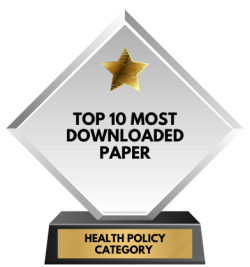
SSRN (Academic Research Network)
How Effective Is Oral Ketamine At Treating Depression?
Key Findings at a Glance
Moderate Effects: Oral ketamine appears to offer moderate antidepressant effects, but the evidence base remains small, methodologically limited, and inconsistent in clinical impact.
Delayed Action: Unlike IV ketamine or esketamine nasal spray—which often show symptom relief within hours or days—oral ketamine consistently takes 2 to 6 weeks to produce measurable improvement, a timeline that mirrors traditional antidepressants.
Statistical vs. Clinical Significance: While some meta-analyses reported statistically significant reductions in depression severity (e.g., SMD = -0.75), the reviews raised doubts about whether this improvement translates into meaningful clinical benefit for most patients.
Uncertain Response Rates: Remission and response rates (RR ≈ 2.6–2.8) were only marginally statistically significant (p-values near 0.06–0.07), leaving it unclear whether these effects are robust or replicable.
Methodological Issues: Across the reviews, common problems included high risk of bias, small sample sizes, brief follow-up periods, and inconsistent tracking of adverse events.
Clinical Implications and Conclusions
What Can We Say About Oral Ketamine with Some Degree of Certainty?
Based on the four systematic reviews, we can draw the following conclusions about oral ketamine:
- Oral ketamine may have some antidepressant effects, but the data is extremely limited and its clinical usefulness remains unclear
- Unlike IV ketamine and esketamine, oral ketamine takes weeks to show effects, similar to traditional antidepressants
- The antidepressant effect appears statistically significant but may not be clinically meaningful for most patients
- Response and remission rates are uncertain and likely unreliable due to marginally significant results
- The evidence base is marked by significant methodological limitations including small sample sizes and high risk of bias
- While oral ketamine shows early promise, it lacks the evidentiary strength needed to support confident clinical use
See the full findings. View the PDF in your browser or download it for later.
Future Research Needs
- Larger, higher-quality trials are needed to determine whether oral ketamine is truly effective, for whom, and under what conditions
- Studies with longer follow-up periods are required to confirm potential antisuicidal effects and effectiveness in treatment-resistant depression
- Direct comparisons with standard antidepressants would help clarify whether oral ketamine offers any unique advantages
- More rigorous monitoring of adverse events is needed to establish a clear safety profile
Systematic Reviews Cited
Journal of Clinical Psychiatry 2019
Oral Ketamine for Depression: A Systematic Review
– Oral ketamine did not produce immediate effects; statistically significant improvements in depression symptoms typically appeared after 2 to 6 weeks of treatment.
– This delayed onset mirrors the timeline of traditional antidepressants, contrasting sharply with the rapid effects of IV ketamine.
– The improvement was statistically significant (p < .05), suggesting the results were unlikely due to chance—but the reviews did not confirm whether this translated into meaningful clinical benefit for patients.
– Systematic reviews emphasized the slower onset of oral ketamine’s antidepressant effects compared to IV formulations, raising questions about its usefulness for patients needing rapid relief.
Psychopharmacology Bulletin 2020
An Update on the Efficacy and Tolerability of Oral Ketamine for Major Depression: A Systematic Review and Meta-Analysis
– Oral ketamine produced a moderate reduction in depressive symptoms compared to placebo (SMD = -0.75; 95% CI: -1.08 to -0.43; p < 0.0001).
– Significant benefits were observed by the second week of treatment (SMD = -0.71; 95% CI: -1.08 to -0.35; p = 0.001; I² = 0%), suggesting a quicker onset than traditional antidepressants.
– Patients were about 2.6 to 2.8 times more likely to achieve response or remission compared to placebo, but these findings were only marginally statistically significant (RR = 2.58 for response; RR = 2.77 for remission; p ≈ 0.06–0.07).
– While oral ketamine appears safe and moderately effective, its ability to deliver full remission remains uncertain and requires confirmation from larger studies.
World Journal of Biological Psychiatry 2023
Oral ketamine for depression: An updated systematic review
– All included studies reported significant improvements in depressive symptoms following oral ketamine treatment.
– The randomized controlled trials were marked by a high risk of bias, largely due to flawed analysis methods and inadequate monitoring of adverse events.
– Early evidence supports oral ketamine’s antidepressant potential, but larger studies with longer follow-up periods are needed to confirm its antisuicidal effects and effectiveness in treatment-resistant depression.
Journal of Affective Disorders 2020
The effect of intravenous, intranasal, and oral ketamine in mood disorders: A meta-analysis
– Both intravenous and intranasal ketamine formulations show strong short-term effectiveness in reducing symptoms of treatment-resistant depression, while oral ketamine demonstrates a more gradual but still meaningful benefit.
– Intranasal ketamine or esketamine reduced depressive symptoms within 24 hours, with a large and statistically significant effect size (Hedges’ g = 1.247; 95% CI: 0.591–1.903; p < 0.01).
– Intravenous ketamine or esketamine showed a large effect size at 2–6 days (g = 0.949), but results were not statistically significant (95% CI: -0.308–2.206; p = 0.139), limiting confidence in the finding.
– Intranasal ketamine sustained a large and statistically significant effect between 7–20 days post-treatment (g = 1.018; 95% CI: 0.499–1.538; p < 0.01).
– Oral ketamine showed a moderate but statistically significant effect by days 21–28 (g = 0.633; 95% CI: 0.368–0.898; p < 0.01), indicating delayed but meaningful symptom improvement.
Which Is More Effective for Depression: IV Ketamine or Esketamine Nasal Spray?
Key Findings at a Glance
Consistent Pattern: IV racemic ketamine produces a much stronger antidepressant effect than intranasal esketamine (Spravato).
Symptom Reduction: IV ketamine was nearly five times more effective than esketamine at reducing depression symptoms in one systematic review.
Response Rates: Patients receiving IV ketamine were three times more likely to respond to treatment than those receiving esketamine (response rate: 3.01 vs. 1.38).
Effect Size: Racemic ketamine had an effect size (d = -0.75) more than double that of esketamine (d = -0.38, p = 0.03).
Remission Likelihood: IV ketamine patients were nearly four times more likely to achieve full remission compared to placebo (RR = 3.78), while esketamine patients were only 1.28 times more likely.
Speed of Relief: IV ketamine showed 4.8 times more effectiveness than esketamine on Day 1 of treatment.
See the full findings. View the PDF in your browser or download it for later.
Important Research Context
These findings come from a review of 12 systematic reviews and meta-analyses comparing ketamine and esketamine for depression. No direct head-to-head studies exist between the two treatments. Instead, these conclusions are drawn from separate placebo-controlled trials where each treatment was tested independently. The degree of difference varied across studies, but IV ketamine repeatedly showed far greater symptom reduction and higher response rates.
Part 1: Effectiveness in Reducing Depression Symptoms
1. IV Ketamine Shows Stronger Effects in Placebo-Controlled Trials
When each treatment was compared separately against a placebo, IV ketamine consistently showed greater improvements:
- In one systematic review, IV ketamine was found to be nearly five times more effective than esketamine at reducing depression symptoms
- Patients receiving IV ketamine were three times more likely to respond to treatment than those receiving esketamine (response rate: 3.01 vs. 1.38)
- Racemic ketamine’s effect size (d = -0.75) was more than double that of esketamine (d = -0.38, p = 0.03)
- Esketamine’s effect size was similar to standard antidepressants, while ketamine’s was significantly stronger
- Based on placebo-controlled data, IV ketamine appears far more effective than esketamine in reducing depression symptoms
2. IV Ketamine’s Antidepressant Effect Is Consistently Large
Multiple systematic reviews confirmed IV ketamine’s powerful impact on depression symptoms:
- One review found that IV ketamine had an extremely large antidepressant effect, with a Hedges’ g of 1.52 – a statistical measure indicating a powerful impact on symptoms
- Another review reported that ketamine’s standardized mean differences (SMDs) were -0.61 and -0.55, compared to esketamine’s -0.22 and -0.15
- These metrics indicate ketamine lowered depression scores by a much larger margin than esketamine in placebo-controlled trials
- While esketamine showed modest improvements over placebo, these findings indicate that IV ketamine had a much stronger and clinically meaningful antidepressant effect
3. Higher Response Rates with IV Ketamine
The percentage of patients showing improvement was consistently higher with IV ketamine:
- One systematic review found patients receiving IV ketamine were three times more likely to respond to treatment than those receiving esketamine (response rates: 3.01 vs. 1.38)
- Another review found racemic ketamine had a 118% higher response rate than esketamine, meaning it was 2.18 times more effective in producing symptom relief
- Based on the available research, patients receiving IV ketamine are far more likely to experience improvement compared to those receiving esketamine
- However, because these were separate placebo-controlled studies, this does not mean IV ketamine would necessarily outperform esketamine if they were tested directly against each other
4. Faster Relief with Ketamine
IV ketamine appears to work more quickly than esketamine and other medications:
- One review found that IV ketamine was 4.8 times more effective than esketamine on Day 1, meaning it provided symptom relief much faster
- Another review found that IV ketamine was 3.1 times more effective than midazolam (a benzodiazepine) in the first 24 hours
- Esketamine’s effects were more comparable to standard antidepressants, while IV ketamine’s effects were much stronger
- IV ketamine may provide more rapid symptom relief than esketamine or standard antidepressants
Part 2: Remission Rates – Which Is More Effective at Achieving Full Remission?
1. IV Ketamine Shows Superior Remission Rates
While both treatments helped some patients reach full remission (complete resolution of depression symptoms), IV ketamine demonstrated a much stronger effect:
- One meta-analysis found patients receiving IV ketamine were nearly four times more likely to achieve full remission compared to placebo (RR = 3.78, 95% CI: 2.44–5.78)
- By comparison, patients on esketamine were only 1.28 times more likely to reach remission compared to placebo (RR = 1.28, 95% CI: 1.11–1.47)
- Another review found the remission rate for IV ketamine was 2.52 times higher than for esketamine (RR = 3.70 vs. 1.47)
- These findings suggest patients receiving IV ketamine are significantly more likely to experience a full resolution of depression symptoms than those taking esketamine
2. Consistently Greater Impact on Remission
Multiple systematic reviews confirmed IV ketamine’s superior performance in achieving full remission:
- One analysis found that racemic ketamine had a remission rate 152% higher than esketamine’s
- Another study confirmed IV ketamine was 2.52 times more effective at ending depression than esketamine
- These results reinforce that while esketamine provides some benefit, it does not appear to drive remission as effectively as IV ketamine
3. Substantially Larger Effect in Placebo-Controlled Studies
The magnitude of difference between treatments and placebo is revealing:
- Racemic ketamine nearly quadrupled the chance of achieving full remission compared to placebo (RR = 3.70)
- Esketamine increased remission rates by only 1.47 times compared to placebo
- This suggests that for every patient who reached full remission on esketamine, a much larger percentage achieved remission with IV ketamine
Clinical Implications and Final Thoughts
The research from these systematic reviews suggests that IV racemic ketamine is likely to be a much stronger antidepressant treatment than esketamine, but it’s important to be precise about what the studies show:
- No head-to-head comparisons were conducted between IV ketamine and esketamine. All findings come from separate placebo-controlled studies
- IV ketamine was nearly five times more effective than esketamine at reducing symptoms in one review
- IV ketamine had a response rate three times higher than esketamine in another analysis
- Several reviews confirmed that IV ketamine had a significantly larger antidepressant effect than esketamine, often more than twice as strong
- IV ketamine provided much faster relief than esketamine or standard antidepressants in some reviews, with effects noticeable on Day 1
- IV ketamine appears to be a stronger option for completely eliminating depression symptoms, with remission rates 152% higher than esketamine’s in one meta-analysis
What This Means for Treatment Decisions
Overall, if the goal is rapid and substantial relief from depression or complete remission, the available research suggests that IV ketamine is a stronger option than esketamine. However, several important caveats apply:
- Without direct comparisons, the exact degree of difference remains uncertain
- Individual responses to either treatment may vary significantly
- Both treatments showed benefit over placebo, indicating that esketamine is still an effective option for some patients
- Treatment decisions should consider individual factors, including accessibility, insurance coverage, and personal health factors
Note: These findings represent data from a review of 12 systematic reviews and meta-analyses comparing ketamine and esketamine. While the evidence strongly suggests significant differences in effectiveness, direct comparative studies would provide more definitive conclusions.
HOW I COMPILED THE DATA
▼
The systematic reviews and meta-analyses compiled on this page represent research published in the last five years. While I have done my best to find the most relevant and high-quality studies, there may be additional research that I was unable to locate.
As an independent individual without institutional access to research databases or the financial resources to purchase paywalled studies, I have relied on publicly available sources. Some of the studies included here were only available as abstracts, meaning I did not have access to the full text. In many cases, these abstracts did not include specific numbers such as absolute response rates or remission rates. As a result, you will see effectiveness categorized as high, medium, or low rather than exact percentages.
It is possible that the full studies contain these missing data points, but without access, I was unable to verify them. This page is intended to provide an accessible summary of the best available research I could obtain, but it is not a substitute for a comprehensive literature review conducted by a research institution.
Why Systematic Reviews and Meta-Analyses Matter More Than Any Single Study
▼
Imagine you’re trying to figure out the best way to stay healthy. One study says drinking coffee every day makes you live longer. Another says it increases your risk of heart problems. A third says it does nothing at all. Who do you believe?
This is the problem with relying on individual studies—they often contradict each other. But a systematic review or meta-analysis gathers all the studies on a topic, weeds out the weak ones, and looks at the overall pattern. Instead of getting lost in the noise of conflicting results, you get a big-picture view of what the best research actually says.
Think of it like movie reviews. If one critic raves about a film but every other reviewer says it’s awful, you probably shouldn’t trust just that one glowing review. But if a hundred critics say it’s great, you can be pretty confident it’s worth watching.
Meta-analyses do the same thing—they combine results from many studies to find the real trend instead of getting distracted by outliers. One small study might suggest a treatment works wonders, but if ten larger studies show it barely helps, a meta-analysis will reveal the truth.
By looking at all the best available evidence, systematic reviews and meta-analyses help us avoid being misled by one-off results, small sample sizes, or studies with flawed methods. They’re the gold standard for understanding what actually works.
Can Psychotherapy Increase Ketamine’s Effectiveness?
While reviewing the research on ketamine for depression, we found a significant gap in the literature: there are currently insufficient high-quality studies examining ketamine-assisted psychotherapy or how psychotherapy might enhance ketamine’s effectiveness. This represents an important area for future research.
In light of this gap, we’ve examined reliable systematic reviews and meta-analyses on how psychotherapy affects outcomes with traditional antidepressants. These well-established findings may offer valuable insights that could apply to ketamine treatment as well.
While we cannot definitively state that these same benefits would apply to ketamine treatment, these findings suggest psychotherapy could potentially play an important role in enhancing and extending ketamine’s antidepressant effects.
Until specific research on ketamine-assisted psychotherapy becomes available, clinicians and patients might reasonably consider incorporating psychotherapy into ketamine treatment plans based on these established principles from traditional antidepressant research.
Key Findings at a Glance
Psychotherapy Effectiveness: Therapy alone performs as well as combined therapy (medication + psychotherapy) for long-term recovery.
Medication Comparison: Psychotherapy is 53% more likely to achieve full remission compared to medication alone (OR = 1.53, 95% CI: 1.00–2.35).
Combination Advantage: People receiving both psychotherapy and antidepressants were 2.52 times more likely to stay depression-free compared to those taking only medication.
Long-Term Benefits: Even after structured treatment ended, combination therapy patients were still 80% more likely to avoid relapse than medication-only patients (OR = 1.80, 95% CI: 1.21–2.67).
Therapy Types: Individual therapy showed the highest response rate (48%), followed by group therapy (41%) and guided self-help (37%).
Detailed Analysis of Response Rates
Psychotherapy and Combination Treatment Show Higher Effectiveness
Meta-analyses indicate that therapy—either alone or combined with medication—yields significantly better response rates than medication alone or minimal care:
- Psychotherapy was 2.5 times more effective than usual care or waitlist conditions
- 41% of patients saw a 50%+ reduction in symptoms compared to 17% in usual care and 16% on a waitlist
- Combination therapy (therapy + medication) was about 25% more effective than medication alone, suggesting an added benefit when both treatments are used together
- Therapy and medication alone showed nearly identical response rates (therapy was 0.99 times as effective as medication)
- Individual therapy achieved a 48% response rate, which was higher than both group therapy (41%) and guided self-help (37%)
- People who combined therapy with antidepressants were nearly three times more likely to see lasting improvement than those relying on medication alone (OR = 2.93, 95% CI 2.15–3.99)
See the full findings. View the PDF in your browser or download it for later.
Detailed Analysis of Remission Rates
Therapy Alone Matches Combination Treatment and Outperforms Medication Alone
The remission data shows therapy alone is just as effective as combination treatment for long-term success and significantly outperforms medication alone:
- People receiving both psychotherapy and antidepressants were 2.52 times more likely to stay depression-free compared to those taking only medication
- Even after structured treatment ended, they were still 80% more likely to avoid relapse (OR = 1.80, 95% CI: 1.21-2.67)
- Therapy alone was 53% more likely to keep people well compared to medication alone (OR = 1.53, 95% CI: 1.00-2.35)
- When therapy was followed by standard care, remission rates remained 66% higher than for medication alone (OR = 1.66, 95% CI: 1.13-2.44)
- Combination therapy led to 23% better full remission rates compared to medication alone
- Therapy and medication alone had nearly identical remission rates—therapy alone was 1.01 times as effective as medication alone
Long-Term Effectiveness Comparisons
- At six months or more, patients who had only therapy were just as likely to improve as those in combination treatment (OR = 1.42, 95% CI 0.97–2.07)
- At one year or more, therapy alone remained equally effective as combination treatment (OR = 1.33, 95% CI 0.88–2.14)
- Psychotherapy nearly triples the chance of full remission compared to doing nothing or receiving minimal care (26-34% of patients fully recovered compared to 9-17% in control conditions)
Clinical Implications
The Role of Psychotherapy in Depression Treatment
These findings have important implications for depression treatment approaches:
- Psychotherapy alone is just as effective as combination treatment for both response and remission
- Therapy is significantly more effective than medication alone for both response and remission rates
- While medication can be beneficial, it does not provide a significant advantage over therapy and may not be necessary for long-term recovery
- Individual therapy appears to offer the highest response rates among therapy types
- Structured psychotherapy plays a powerful role in long-term recovery from depression—whether used with or without medication
Research Limitations and Future Directions
- This research did not evaluate ketamine specifically
- Further research is needed to clarify how psychotherapy might influence outcomes when paired with ketamine
- The findings reinforce that psychotherapy should be considered a primary treatment option for depression, either alone or in combination with medication
Note: These findings represent data from meta-analyses comparing various depression treatments. The evidence strongly suggests psychotherapy offers substantial benefits, potentially equal to combined treatment and superior to medication alone.
Frequently Asked Questions
Which is more effective for treating depression: IV ketamine or the esketamine nasal spray Spravato?
Twenty-five systematic reviews and meta-analyses—such as those published in EClinicalMedicine (2023), Journal of Affective Disorders (2024), and Expert Opinion on Drug Safety (2022)—consistently show that IV ketamine is substantially more effective than Spravato (esketamine nasal spray) for treating depression.
In pooled studies, IV ketamine tripled the likelihood of achieving symptom response compared to placebo (RR = 3.01), while esketamine showed only a modest improvement (RR = 1.38). Remission rates were also dramatically higher: patients receiving IV ketamine were 2.5 to 4 times more likely to achieve remission than those on placebo, whereas esketamine increased remission odds by just 28%–47%.
Effect sizes tell a similar story—IV ketamine scored a Cohen’s d of -0.75 (a large effect), while esketamine averaged -0.38, only slightly above what’s seen with SSRIs (≈0.30). These differences are not subtle. In fact, the antidepressant impact of IV ketamine is among the strongest seen in modern psychiatry. While esketamine acts quickly, its effects often fade within weeks unless continued, and dropout rates in trials were up to 80% higher than for IV ketamine.
How effective is oral ketamine compared to other administration methods?
Oral ketamine appears significantly less effective than IV ketamine and shows weaker, slower results than esketamine nasal spray. In four systematic reviews published between 2020 and 2024, oral ketamine showed moderate antidepressant effects—but unlike IV ketamine, which often works within 24 hours, oral forms typically take 2 to 6 weeks to show any meaningful improvement (Journal of Clinical Psychiatry, 2019; Psychopharmacology Bulletin, 2020). That’s on par with SSRIs, not psychedelics.
When response and remission rates were reported, they hovered around 2.6 to 2.8 times higher than placebo—but these findings barely cleared the bar for statistical significance and came from small, high-bias studies (Psychopharmacology Bulletin, 2020; World Journal of Biological Psychiatry, 2023). By contrast, IV ketamine tripled the chance of symptom response (RR = 3.01) and nearly quadrupled remission (RR = 3.78) in much larger and more rigorous reviews (EClinical Medicine, 2023; Expert Opinion on Drug Safety, 2022). Esketamine’s performance was more modest than IV but still more consistent than oral: effect sizes ranged from 0.15 to 0.38, with a response rate of 1.38 over placebo (American Journal of Psychiatry, 2024).
So while oral ketamine might help some people, the current evidence shows it’s slower, less powerful, and far more uncertain than either IV or nasal administration. It doesn’t yet offer the reliability or rapid relief that define ketamine’s clinical reputation.
See exactly what the evidence says — 33 systematic reviews and meta-analyses, with outbound links to every source. View the full PDF here or download it for later.
How quickly does ketamine therapy work to reduce or eliminate depression symptoms or suicidal ideation?
Ketamine therapy can begin reducing depression symptoms or suicidal thoughts in as little as 40 minutes, with peak antidepressant effects typically emerging within 24 hours of a single infusion. This finding, backed by multiple systematic reviews and meta-analyses, makes ketamine one of the fastest-acting depression treatments in psychiatry (Current Neuropharmacology, 2014; Molecular Psychiatry, 2022; Frontiers in Psychiatry, 2024).
In clinical trials of IV ketamine, response rates (meaning a ≥50% reduction in symptoms) were seen in 45% to 65% of patients within 24 hours—compared to just 5%–20% for placebo (Therapeutic Advances in Psychopharmacology, 2023; Brain Sciences, 2023). Remission (few or no symptoms) occurred in up to 30% of patients after one infusion, and repeated infusions increased the odds to 40% or more (Brain Sciences, 2023; Current Neuropharmacology, 2014).
Suicidal ideation often drops even faster. Some reviews found that suicidal thoughts diminished within 40 minutes, though this wasn’t consistent across all studies (Current Neuropharmacology, 2014; Therapeutic Advances in Psychopharmacology, 2023). One large meta-analysis reported that patients receiving ketamine were 10 times more likely to show improvement in suicidal ideation by Day 1 compared to placebo (Translational Psychiatry, 2024). Repeated infusions further extended this benefit, helping keep suicidal thoughts lower for days or even weeks in some cases (Translational Psychiatry, 2024).
The speed of action is one of ketamine’s most defining strengths. No other approved antidepressant—including SSRIs or esketamine nasal spray—matches the rapid onset consistently observed with IV ketamine.
What percent of people who undergo ketamine therapy report at least a 50% reduction in symptoms?
According to twelve systematic reviews and meta-analyses published between 2020 and 2024, between 30% and 76% of patients who undergo ketamine therapy for depression report at least a 50% reduction in symptoms—a benchmark known as clinical response (Therapeutic Advances in Psychopharmacology, 2023; Brain Sciences, 2023; Molecular Psychiatry, 2022; Current Neuropharmacology, 2014).
The median response rate across these reviews was 55%, meaning that over half of patients experienced a major drop in depressive symptoms, often after just one or two infusions (Frontiers in Psychiatry, 2024). In randomized controlled trials of IV ketamine, the results were even stronger, with response rates reaching 63%, compared to 5%–20% for placebo (Therapeutic Advances in Psychopharmacology, 2023; Brain Sciences, 2023). By contrast, real-world studies found slightly lower rates, around 30%—a pattern commonly observed in psychiatric research when trial controls are removed (Therapeutic Advances in Psychopharmacology, 2023).
These numbers place IV ketamine among the most effective depression treatments ever studied—especially for people who haven’t responded to SSRIs, psychotherapy, or other standard options.
What percent of people who undergo ketamine therapy report going into remission (little or no symptoms)?
Across five major systematic reviews and meta-analyses published between 2020 and 2024, between 27% and 43% of patients who received ketamine therapy for depression reported going into remission—meaning their symptoms became minimal or disappeared altogether (Brain Sciences, 2023; Molecular Psychiatry, 2022; Current Neuropharmacology, 2014; Frontiers in Psychiatry, 2024; Therapeutic Advances in Psychopharmacology, 2023).
The median remission rate was 29%, typically measured after just one or two IV ketamine infusions. Some studies reported even higher remission rates (up to 40%) with “serial” infusions, though the exact number of treatments varied and wasn’t always clearly defined (Brain Sciences, 2023).
While these results are impressive for such a short course of treatment, long-term remission data is scarce. Most studies tracked patients for only a week or two. So while ketamine shows striking short-term potential to bring depression into remission—faster than any traditional antidepressant—we still don’t know how often that remission lasts without continued treatment.
Does combining ketamine with psychotherapy improve outcomes?
Early evidence suggests it might—but the science is still catching up. Across four systematic reviews published between 2020 and 2024, combining ketamine with psychotherapy showed signs of improving outcomes, especially for people who initially responded well to ketamine. In several studies, patients who received therapy after ketamine experienced longer-lasting antidepressant effects and lower relapse rates compared to those who didn’t (Journal of Pain Research, 2022; British Journal of Psychiatry, 2023). One trial found that 44% of patients reached remission when ketamine was paired with cognitive behavioral therapy—an encouraging signal, even if based on small sample sizes (British Journal of Psychiatry, 2023).
But in the only randomized trial focused on depression, combining psychotherapy with ketamine showed no significant benefit over ketamine alone (Journal of Affective Disorders, 2022). And most of the strongest results came from PTSD studies, not depression. The meta-analyses noted that therapy might help extend ketamine’s effects, but the data were too limited to explain why—or to say which therapeutic approach works best, or when to deliver it (Journal of Clinical Psychiatry, 2023).
The likeliest explanation? Ketamine may open a temporary “therapeutic window”—a period of heightened neuroplasticity and emotional openness—when therapy hits harder and sticks longer. That window could be the key. But for now, ketamine-assisted psychotherapy remains promising but unproven, and larger, better-controlled trials are still needed to turn that promise into certainty.
My Personal Take
Why I Had to Build This Ketamine Evidence Base Myself
I spent months digging through every systematic review and meta-analysis on ketamine from the last five years. Not because I wanted to. Because I had to. I was trying to answer a basic, urgent question: What are the odds this will actually end my depression—or at least make a dent in it?
And the answer, everywhere I looked, was silence. WebMD? Mayo Clinic? Harvard Health? Nothing. No remission rates. No response percentages. Just vague phrases like “has shown promise” or “can be effective.”
Meanwhile, ketamine therapy costs thousands of dollars. It eats up hours every week. You need rides. You need time off. You need trust. And somehow, no one thinks you deserve a number?
Yes, It’s Complicated—But That’s No Excuse
I get it. Clinics and institutions don’t publish these numbers because they’re afraid people will misinterpret them. They’ll hear “up to 72% remission with IV ketamine” and think it’s a guarantee. It’s not. The most important words in that sentence are “up to.”
But from a patient’s perspective, the direction of the number is what matters. You’re not comparing 72% to 100%. You’re comparing it to 20%—the remission rate for SSRIs in treatment-resistant depression. That’s not a minor difference. That’s a gulf.
Directionality Changes Everything
Publishing numbers isn’t about certainty. It’s about scale. Trajectory. Odds. It’s saying: most people in your position who try this have a shot. A real one. That doesn’t mean it will work for you. It means it works often enough to take seriously.
And that’s what no one was willing to tell me—so I found out myself.
What Does Scientific Research Show About IV Ketamine’s Effectiveness For Depression?
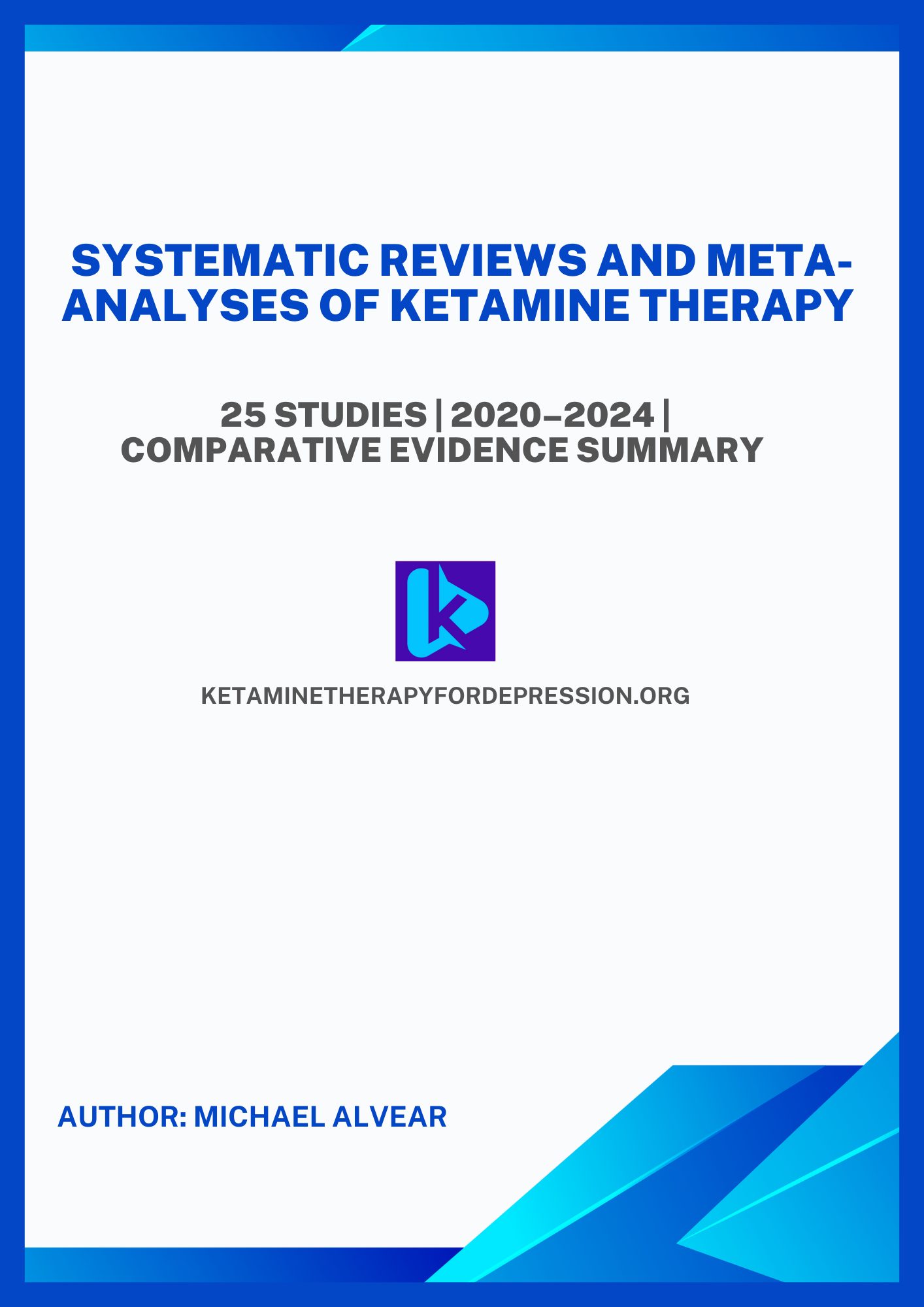
I pulled together 33 systematic reviews from the last five years into one report—so you don’t have to rely on hype, guesses, or anecdotes. This is the highest level of real-world evidence we have.
Inside My Report You’ll Find
- What percent of patients enter remission—broken down by delivery method
- Which method is most effective—IV, injection, or Spravato nasal spray
- How fast ketamine can work to reduce or end symptoms
- Which combinations (like psychotherapy) may enhance response
- And a lot more…
Verified by the Platforms That Matter
This research summary report has been published across four trusted platforms that host peer-reviewed or open science content, including:
– Published ketamine research on Zenodo
– Ketamine evidence summary hosted on SSRN
– Scientific report on ketamine outcomes on Figshare
– Evidence-based ketamine therapy report on OSF
